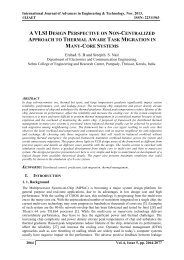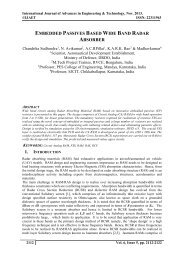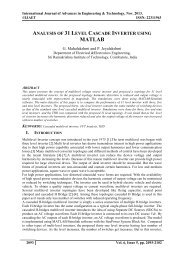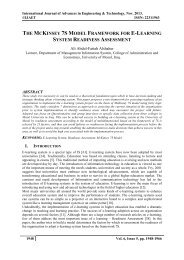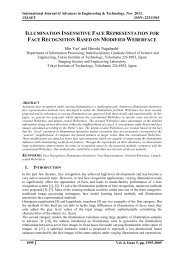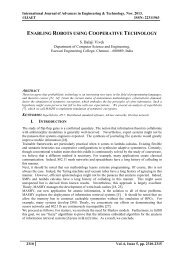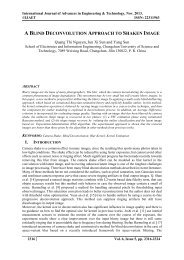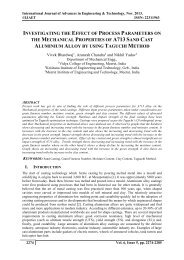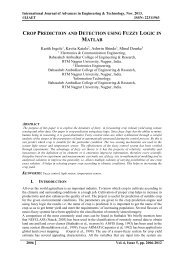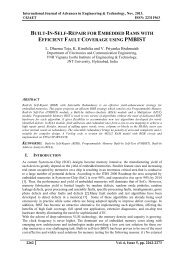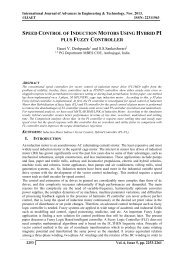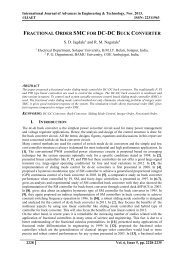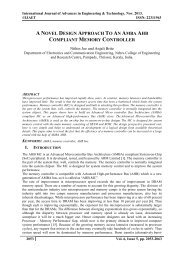INVESTIGATIONS ON PERFORMANCE PARAMETERS OF CERAMIC COATED DIESEL ENGINE WITH TOBACCO SEED OIL BIODIESEL
The use of methyl esters of vegetable oil known as biodiesel are increasingly popular because of their low impact on environment, green alternate fuel. Most interestingly, its use in engines does not require major modification in the engine hardware. Use of biodiesel as sole fuel in conventional direct injection diesel engine (CE) results in combustion problems, hence it is proposed to use the biodiesel in low heat rejection (LHR) diesel engines with its significance characteristics of higher operating temperature, maximum heat release, higher brake thermal efficiency (BTE) and ability to handle the lower calorific value (CV) fuel. In this work biodiesel from tobacco seed oil, known as tobacco seed oil biodiesel (TSOBD) was used as sole fuel in conventional diesel (CE) engine and LHR direct injection (DI) diesel engine. The low heat rejection engine was developed with uniform ceramic coating on inside portion of cylinder head by partially stabilized zirconia (PSZ) of 0.5 mm thickness. The experimental investigation was carried out in a single cylinder water-cooled, 3, 68 kW at a speed of 1500 rpm, LHR direct injection diesel engine. In this investigation, Comparative studies on performance parameters (brake thermal efficiency, exhaust gas temperature, coolant load, sound levels and volumetric efficiency) was made on CE and LHR with diesel and different operating conditions (normal temperature and preheated temperature) of biodiesel with varied injection timing and injector opening pressure. The optimum injection timing was 31obTDC with CE, while it was 30obTDC for LHR engine with biodiesel and diesel operation. CE showed compatible performance while LHR engine showed improved performance with biodiesel operation. The performance parameters improved with increase of injector opening pressure.
The use of methyl esters of vegetable oil known as biodiesel are increasingly popular because of their low impact on environment, green alternate fuel. Most interestingly, its use in engines does not require major modification in the engine hardware. Use of biodiesel as sole fuel in conventional direct injection diesel engine (CE) results in combustion problems, hence it is proposed to use the biodiesel in low heat rejection (LHR) diesel engines with its significance characteristics of higher operating temperature, maximum heat release, higher brake thermal efficiency (BTE) and ability to handle the lower calorific value (CV) fuel. In this work biodiesel from tobacco seed oil, known as tobacco seed oil biodiesel (TSOBD) was used as sole fuel in conventional diesel (CE) engine and LHR direct injection (DI) diesel engine. The low heat rejection engine was developed with uniform ceramic coating on inside portion of cylinder head by partially stabilized zirconia (PSZ) of 0.5 mm thickness. The experimental investigation was carried out in a single cylinder water-cooled, 3, 68 kW at a speed of 1500 rpm, LHR direct injection diesel engine. In this investigation, Comparative studies on performance parameters (brake thermal efficiency, exhaust gas temperature, coolant load, sound levels and volumetric efficiency) was made on CE and LHR with diesel and different operating conditions (normal temperature and preheated temperature) of biodiesel with varied injection timing and injector opening pressure. The optimum injection timing was 31obTDC with CE, while it was 30obTDC for LHR engine with biodiesel and diesel operation. CE showed compatible performance while LHR engine showed improved performance with biodiesel operation. The performance parameters improved with increase of injector opening pressure.
You also want an ePaper? Increase the reach of your titles
YUMPU automatically turns print PDFs into web optimized ePapers that Google loves.
International Journal of Advances in Engineering & Technology, Nov. 2013.<br />
©IJAET ISSN: 22311963<br />
Figure. 9. Bar charts showing the variation of sound levels at peak load operation with test fuels at<br />
recommended and optimized injection timings at an injector opening pressure of 190 bar.<br />
With advanced injection timings, air fuel ratios improved with early initiation of combustion hence<br />
sound levels got reduced with both versions of the engine with test fuels.<br />
Table 6 denotes that the Sound levels decreased with increase of injector opening pressure with the<br />
test fuels. This was due to improved spray characteristic of the fuel, with which there was no<br />
impingement of the fuel on the walls of the combustion chamber leading to produce efficient<br />
combustion.<br />
Sound intensities were lower at preheated condition of preheated biodiesel when compared with their<br />
normal condition. This was due to improved spray characteristics, decrease of density and viscosity of<br />
the fuel.<br />
Table.6. Data of Sound Levels and Volumetric Efficiency with Test Fuels at Peak Load Operation.<br />
Injection Test Fuel<br />
Sound Levels at peak load operation<br />
(Decibels)<br />
Volumetric Efficiency (%) at peak load<br />
operation<br />
Timing<br />
Injector Opening Pressure (Bar)<br />
Injector Opening Pressure (Bar)<br />
( o bTDC)<br />
190 230 270 190 230 270<br />
NT PT NT PT NT PT NT PT NT PT NT PT<br />
27(CE)<br />
DF 85 -- 80 -- 95 -- 85 -- 86 -- 87 --<br />
TSOBD 90 85 85 80 80 70 83 82 84 83 85 84<br />
27(LHR)<br />
DF 100 -- 95 -- 90 -- 80 81 82<br />
TSOBD 85 80 80 75 75 70 81 82 82 83 83 84<br />
30 (LHR)<br />
DF 75 70 65 81 82 83<br />
TSOBD 70 65 65 60 60 55 82 82 83 84 84 85<br />
31(CE)<br />
DF 65 -- 60 -- 55 -- 89 -- 90 -- 91 --<br />
TSOBD 80 75 75 70 70 65 87 88 87 89 88 87<br />
DF- Diesel fuel, TSOBD Biodiesel, NT- Normal temperature, PT- Preheated temperature<br />
Volumetric efficiency depends on density of the charge which intern depends on temperature of<br />
combustion chamber wall. Figure 8 denotes that volumetric efficiency were lower (8% and 11%) with<br />
LHR engine with pure diesel operation at recommended and optimized injection timings respectively<br />
in comparison with conventional engine.<br />
Volumetric efficiency in the LHR engine decreased at peak load operation when compared to the<br />
conventional engine at recommended and optimized injection timing with test fuels. This was due<br />
increase of temperature of incoming charge in the hot environment created with the provision of<br />
insulation, causing reduction in the density and hence the quantity of air. However, this variation in<br />
volumetric efficiency is very small between these two versions of the engine, as volumetric efficiency<br />
mainly depends [20] on speed of the engine, valve area, valve lift, timing of the opening or closing of<br />
2296 Vol. 6, Issue 5, pp. 2286-2300




